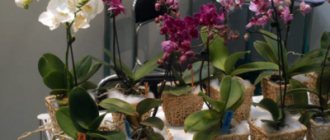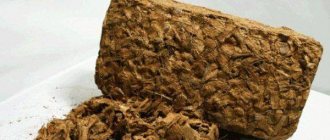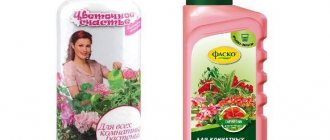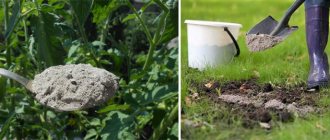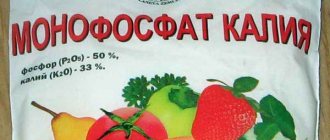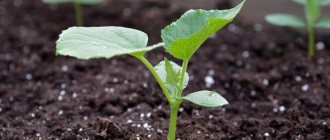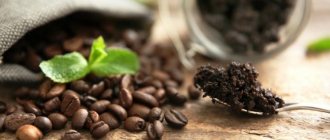Horse manure is the natural waste of horses that occurs in large quantities.
Even where owners keep only a couple of horses, their manure becomes a serious problem over time.
The fact is that it not only has a sharp, unpleasant odor, but is also a source of various infections. However, if used correctly, horse manure can bring many benefits.
Considering that an adult horse produces approximately 20 kg of manure per day , the owners of these animals should know well what to do with it, how to properly fertilize their summer cottage/garden with it in spring and autumn, so that the land replenishes its nutrients as much as possible, and other methods of using dry , rotted and fresh excrement.
From this article you will learn:
- what is it for, what properties does horse manure have, is it useful for the garden, and what exactly is it good for;
- how to properly use rotted excrement in the garden and dacha for fertilizer in spring and autumn, and whether it is possible to use it fresh;
- how to dilute fresh, rotted or dry horse manure to feed plants, what can and cannot be fertilized/watered with it;
- how and where else you can use it at your dacha.
What is horse manure?
Usually this type of excrement is in compact piles, because due to the fairly low humidity (75–80%) it does not spread like cattle manure.
Due to the fact that horses are not only kept in pens or stables, but also periodically walked, their excrement can end up at any point on their usual route.
Manure collected in a stable or paddock can be either bedding, that is, a mixture of excrement with sawdust, straw or other chopped vegetation, or unlittered, that is, collected from a concrete or wooden floor.
The design of the stable is also of great importance. If it is equipped with a urine drainage system, that is, separation into solid and liquid fractions occurs immediately, then the humidity of the excrement is 70–75%.
If there is no such system, then the solid and liquid fractions are removed during daily cleaning, but in this case it is necessary to use bedding that absorbs animal urine.
Sawdust and coniferous shavings are
very , because they not only absorb urine, but also:
- perform the function of an antiseptic, suppressing the activity of bacteria that cause various diseases;
- Due to the high concentration of aromatic resinous substances, they muffle the unpleasant odor characteristic of manure.
In open areas, excrement cannot always be detected immediately, so some of it has time to dry out and turn into dry manure. There is also partially dried material - not yet dry, but in which the activity of bacteria has almost completely stopped and their population has begun to decline.
Benefits of horse litter
According to physical indicators, horse droppings are lighter, since they initially contain less moisture - about 70%. Due to the high content of plant residues, when incorporated into the soil, it swells and increases the moisture content. On heavy clay soils, plants breathe better because loose soil does not prevent air from penetrating to the roots.
It has an alkaline reaction, therefore it reduces acidity after using mineral fertilizers. The most environmentally friendly vegetables and fruits can be grown using horse humus as a fertilizer; according to reviews from gardeners, they additionally added mineral fertilizers in chelated form.
The laboratory found that with this combination of substances - organic and mineral - the vegetables had a safe natural content of nitrates and phosphates.
Compound
Horse manure has a high nitrogen content - about 2% in fresh matter. In humus, after 1.5 years the amount decreases by 75%, so nitrogen will need to be added separately.
Potassium and phosphorus are 0.6 and 0.2%, respectively. These microelements can last longer. The most abundant microelements are magnesium and calcium. The rest are also present, but in small quantities.
There are fewer weed seeds in horse droppings because the horse eats grain, corn and animal feed. Grass is not a staple food for horses.
Composition and properties
Despite the fact that the main component of horse manure is water, it also contains many other substances in various proportions - per 1 kg of fresh excrement there is an average of:
- 230 g of organic matter, which contains not only partially digested cellulose or lignin, but also intestinal enzymes, as well as various acids;
- 6 g of nitrogen in the form of various compounds;
- 5 g potassium oxide (K2O);
- 4 g calcium oxide (CaO);
- 3 g phosphorus oxide (P2O5).
Many elements of the periodic table are present in less significant quantities (from tenths to thousandths of a gram).
All this makes fresh manure a very aggressive substance that can kill any soil, but after rotting it turns it into one of the best complex fertilizers, which introduces not only humic acids (humus) into the soil, but also many essential microelements.
Granular manure
Using granulated horse manure is easier and more effective than using fresh horse manure. In the spring, it is enough to distribute the fertilizer over the area and dig up the soil to a depth of about 10 cm, then water it generously. Per hundred square meters of land will require about 15 kg of dry mixture.
You can first dilute the fertilizer in water.
To do this, pour cold water over the granules and let it brew for 2 weeks. The resulting solution is mixed well and poured onto the beds. Proportions must be observed, so you should first study the information on the packaging. There is a type of granular manure that does not require long infusion. It is dissolved in cold water, and after four hours the fertilizer is ready for use. We hope you find our information about horse manure helpful. This is an excellent organic fertilizer that is suitable for feeding potatoes, celery, melons, and spinach. And you don’t have to own horses to provide yourself with this fertilizer. Horse manure can be purchased at the nearest stable, or you can buy its granular counterpart in the store.
Can it be used as a top dressing?
To answer this question, it is necessary to understand how the soil changes during the development and fruiting of plants, and then find out how fresh and rotted horse manure affects the soil.
Any soil consists of humus, clay and sand.
The basis of humus is humic acids , which are the only substance that is a building material for plant cells.
Mono- and polysaccharides contained in humus provide the plant with energy, and from humic acids, the germinating seed or developing sprout forms new cells, due to which the plant develops.
Clay acts as a binding material, giving the soil the necessary strength, and sand is a conductor and reservoir of water. Plants primarily extract humic acids and various saccharides from the soil; the less of them remains in the soil, the less fertile it will be .
Fresh horse manure does not contain humic acids, so it has no particular benefit to the soil until it rots. But even fresh excrement is used as fertilizing, diluting it tens or hundreds of times with water, because this makes it possible to safely supply plants with microelements.
But such fertilizing in the spring is less effective than using full-fledged humus, because in addition to microelements, the soil needs the renewal of humic acids and various organic polymers, which are necessary for any plants to develop.
But after rotting, horse manure has many beneficial properties, turning into a source of such acids. In addition, part of the vegetation that served as food for horses, after passing through their gastrointestinal tract, retains its shape and structure, due to which it can loosen the soil, performing the same function as sand.
However, litter excrement is more effective for improving soil structure , and the larger and thicker the litter material, the higher the effectiveness of such fertilizer.
Manure in fresh consistency
Early maturing crops are usually fed with fresh manure. This type of feeding is prepared in advance, in the autumn, or even earlier. Fertilizer material is applied to the soil after harvesting the fruits. But it prepares the soil for fertilization in advance, clearing the area of weeds and other plant debris.
Add 1 bucket of fertilizer material to 1 m2 of soil that will be used for planting. It is best to dig up the soil, which will allow the soil and droppings to mix. To get maximum results, the planting site is covered with film material until spring. This measure is necessary to ensure that nitrogen and other compounds do not evaporate from the manure.
By spring, the land will be ready for planting. It will only be possible to use organic or purchased minerals to provide the soil with additional elements. The manure will have rotted away by this time, and any plants can be planted on the beds.
What plants is it suitable for?
Horse manure can be used to fertilize any crops that grow naturally in fields or forests, because their metabolism is based on feeding on humic acids, into which this material turns after rotting.
Therefore, they can be fertilized:
- any garden or vegetable plants;
- garden trees;
- plants in pots that naturally grow on humus soils, that is, where the soil is renewed by rotting dead animals or plants.
But they shouldn’t fertilize and feed crops growing in sandy deserts, because they have a completely different metabolism, they use different nutrients, and manure can only harm them.
Storage options
The main task during storage is to preserve nutrients in humus or another form. There are only two common storage options: cold and hot.
Hot way
Provides for storing horse manure loose so that air penetration is at a high level. This increases the benefit of the fertilizer. The litter becomes lighter, but loses ½ nitrogen. Let the manure pile sit for up to six months.
Cold way
Storing manure in bags is a more rational solution. This is a cold option and allows you to retain most of the nitrogen. Keep in the correct position to ensure sufficient oxygen supply.
Store in a specially prepared hole, at the bottom of which there will be peat or straw. You can use sawdust. A layer of litter up to 25 cm, and a layer of manure 15-20 cm layers are laid out one on one. The last layer is a straw bedding.
Which is better?
This question usually refers to the physical state of the manure, that is:
- liquid - collected using the flush method;
- fresh, including litter, normal humidity;
- partially rotted, including litter;
- humus, including litter;
- dry, including granulated.
The answer to this question is directly related to the purpose for which they are going to use horse manure and where to use it. If we are talking about fertilizer, then rotted material is best, because it is a universal product that simultaneously performs several functions.
If it is going to be used to heat the soil in greenhouses or greenhouses, then fresh bedding material is better suited, because it not only burns longer than clean material and releases a lot of heat, but after rotting it also turns into high-quality humus that can loosen the soil.
If it needs to be transported over a long distance, then dry material is best, because it has minimal volume and weight. We have prepared a table that includes the most popular methods of application, as well as the corresponding type of horse manure:
| Application | State |
| Mulching all year round | Rotten |
| Mulching before leaving fallow | Partially or completely rotted |
| Production of liquid fertilizer | Dry, including granular, liquid, fresh or partially rotted |
| Fuel production | Fresh litter |
| Storage for next year | Dry, including granulated |
| Processing into alcohol | Liquid, fresh or dry |
| Biogas production | Liquid or fresh |
Rotted horse droppings and humus
In addition to fresh substrate and compost, horse humus and manure of varying degrees of maturity are widely used - rotted and semi-rotted.
The content of nitrogen substances in aged mixtures is 50% lower, but the substance remains a valuable nutritional raw material for plants, since the amount of nitrogen does not affect the formation of humus. The main component is plant residues for feeding microorganisms. It can also be applied in liquid form for irrigation or dug into the soil in the fall.
Humus contains 25% nitrogen of the original amount. This substance does not look like horse droppings; all the straw bedding has rotted in it. The volume also decreases with long-term storage, so experienced gardeners do not recommend keeping manure until it becomes humus.
How to use horse manure in the garden?
The options for using this material depend on two factors :
- his physical condition;
- goals to be achieved.
Therefore, we will talk about how to transfer it from one state to another, and about its correct application, which allows you to achieve your goals.
Production of liquid fertilizer
There are several options for preparing this fertilizer, which differ in the state of the original product, that is, horse manure. Fertilizer from fresh material has a minimal concentration, because it is diluted hundreds of times with water .
If you make the mixture stronger, then instead of benefiting the garden, it will do a lot of harm, because in such a concentration, intestinal enzymes and other substances have a detrimental effect on plants and soil.
Feeding from semi-rotted material is made less concentrated, that is, one share of raw material accounts for 30–70 parts of water. To make fertilizer from humus, a ratio of 1:10 is used, that is, for one share of raw material there are 10 shares of water.
Preparation of rotted material
To rot, excrement is taken to a pre-prepared site (gnosche) or stored in special structures located at a sufficient distance from both the stable and other buildings.
At the sites, they are dumped into piles and covered with waterproof fabric or polymer film, leaving space underneath for free movement of air and escape of gases.
To speed up decay, the pile is treated with bacterial preparations, and also turned by hand or with tractor turners. The time for complete decay depends on many factors and ranges from 3–18 months.
Drying and granulating
If it is necessary to store horse manure for the future or transport it to another city/region, then it is dried or granulated.
For drying without special equipment, they use the methods that we described in the Kizyak article, that is, they form cakes and either lay them on the ground or sculpt them on a barn wall intended for this purpose .
As soon as the dung has dried a little, they are placed in conical hollow piles, leaving space between the cakes for air movement. Drying by granulation is described in detail in articles about separators and granulators.
Mulching
Mulching with manure is used to solve many problems, such as:
- reduction of water evaporation;
- protection from frost or heat;
- weed control;
- restoration of soil fertility;
- improvement of soil structure.
The only advantage of horse excrement is that it produces the most balanced mulch , so it will be the most versatile.
However, properly prepared mulch from any other excrement will be better suited for solving the tasks for which it was made than universal fully or partially rotted horse manure.
Heating soil in greenhouses
Horse manure is considered one of the best materials for heating the soil in greenhouses or greenhouses, because it “burns” for a long time, releasing more heat than the excrement of other animals or birds.
It should be noted here that the most effective material for these purposes will be the material on the litter .
The procedure for heating with horse excrement is exactly the same as that described in the article on greenhouses, and dried excrement of not only horses, but also any other animals or birds can be used as insulation.
Manure-based compost
The use of horse manure with sawdust as fertilizer, according to experimental gardeners, helps preserve most of the nitrogen substances. It is advisable to use not fresh wood, but slightly aged wood.
This mixture is used in compost. First, a layer of sawdust or peat is placed on the bottom of the pile, then a layer of manure, soil, and vegetable waste. Next, the laying order is repeated so that manure makes up 40% of the total amount of components of the compost heap.
When compost burns, the temperature in it rises to 75 degrees. This requires good aeration. If the pile is built for preparing compost, then the gaps between the boards will be about 4 - 5 cm. The storage pile is made without gaps to reduce air access and lower the temperature. During storage, it should not rise above 30 degrees.
Horse compost is ready in 6 – 8 months. If you add mullein to it, the mixture will be ready in 12 months.
Horse manure compost is the safest form of fertilizer. It is used for mixing with soil for replanting house plants, sprinkled under berry bushes as a complex organic fertilizer, grown seedlings on it, and added to holes for seedlings of fruit trees.
Feeding plants with a liquid solution
Fertilizing restores in the soil the nutrients and microelements consumed by plants for their development. Many diseases of cultivated crops are associated with a lack of various substances, and proper fertilizing improves their condition and helps cope with the disease.
All fertilizers can be divided into 3 types :
- general;
- root;
- foliar.
During general fertilizing, fertilizer is poured throughout the garden or vegetable garden, so it has a beneficial effect on all plants.
Root feeding is used to fertilize individual plants, so the solution is carefully poured under the root, trying not to touch the leaves.
This allows you to more accurately regulate the impact on the soil, because not all plants on the site need additional nutrition, and for some plants, especially during the period of fruit ripening, this can even be harmful.
Foliar feeding is sprayed over the surface of the foliage, so that nutrients are supplied not through the root system, but through the leaves.
General
General fertilizing is best done in late autumn (after harvest and leaves fall) or early spring (before sap flow begins). Moreover, in the fall you can use a composition based on partially rotted excrement, adding 30–40 parts of water to one part of the material .
For spring feeding, the amount of water needs to be increased by 1.5–2 times. If fertilizing is done from humus, then the optimal ratio between fertilizer and water is 5–15 and depends only on the comfort of work.
After all, a steep solution is similar to a medium liquid semolina and not everyone is comfortable working with it, but at a minimum concentration the mixture turns out to be more fluid, almost liquid, so many people find it convenient to work with it.
Root
Root feeding from completely or partially rotted excrement is applied either in early spring before the start of sap flow, or 1–2 weeks before the ovaries appear.
to add it later, because this will lead to an increase in the amount of nitrates in the fruits .
After harvesting and the leaves have fallen, you can apply any fertilizer, including fresh material, maintaining the correct ratio of fertilizer and water.
Often, root feeding is combined with pre-winter watering; in this case, fertilizer can be applied both during watering, before or after it.
Foliar
Foliar feeding is applied during the period from the appearance of fruit buds to the beginning of fruit ripening. Due to its minimal concentration, it does not lead to an increase in nitrate content , but accelerates the growth of green mass, which has a beneficial effect on all processes occurring in the plant.
However, even it should not be used after the fruits begin to ripen, because this will lead to a change in their chemical composition.
And after harvesting, the plant begins to prepare for winter, so treating the leaves with fertilizer can no longer help it.
How to properly soak feeding material?
To prepare the infusion, you will need a plastic or metal container, the volume of which is 1.5–2 times larger than the required volume of the finished solution.
To properly dilute, use the following dosage -
add 3-5 parts of water to one part of excrement , since it is necessary to make the fertilizer more liquid, suitable for further dilution with water and subsequent effective use.
Manure is placed in the container and water is poured in, and the order of actions does not matter, then all the contents are thoroughly mixed with a strong stick or shovel.
Despite the fact that a couple of hours are enough for the manure to liquefy, it is advisable to leave the mixture for a week so that the bacteria process it at least a little and make it less toxic. This should be done even when soaking humus, because after such exposure the mixture has a more beneficial effect on the soil and plants.
How to dilute the mixture?
To convert soaked manure into a usable liquid fertilizer, the semi-liquid mixture is poured into the required amount of water or diluted with the required amount of water. There is no difference between adding fertilizer to water and adding water to the solution container.
Then the contents of the container are mixed until smooth, and the liquid fertilizer becomes ready for use.
If water is delivered in buckets or barrels for pre-winter irrigation, then the ready-made fertilizer for general application can be evenly distributed between all containers.
Methods of application
, standard equipment is used to apply the mixture , which any gardener or gardener has, that is:
- buckets;
- watering cans;
- sprayers.
Watering cans are best suited for general fertilizing, because they allow you to evenly distribute the solution over a large area.
For root feeding with liquid fertilizer based on horse manure, use buckets or watering cans with the sprayer removed.
All this allows you to apply the finished composition to the plants, without paying attention to small lumps.
However, the foliar method requires a sprayer that can only work with clean liquids, so the fertilizer must be filtered before pouring.
Chicken manure fertilizer
Chicken manure is rich in nutrients: nitrogen, phosphorus, potassium, magnesium
A chic flowering flowerbed will appear on your site if you use chicken manure to add organic matter. Flowers will thank the gardener with numerous bright flowers; you just need to apply the fertilizer correctly. Chicken droppings contain a variety of nutrients: nitrogen, phosphoric acid, potassium, magnesium, sulfur. This fertilizer is especially rich in phosphorus and nitrogen. The content of these elements in chicken manure is several times higher than the amount of elements found in cattle manure. To improve plant development, gardeners mix one part chicken manure with three parts sawdust and straw, and then spread it on the ground next to flower crops.
Methods for preparing liquid fertilizers from chicken manure
- Fermentation method. Now agrotechnical stores have the necessary preparations to speed up fermentation. Previously, this method was used exclusively on poultry farms. The sawdust must be treated with a special preparation and poured into the chicken cage. When cleaning the cage, sawdust and droppings must be mixed and placed in a certain place. When the heap reaches the required size, it needs to be watered with a fermentation accelerator. After a month, the pile needs to be dried, and the flower food is considered ready.
- A simpler method is to infuse chicken manure. To prepare it, you need waste and water in a ratio of 1:100. The finished solution resembles brewed tea in color. If the shade is of a brighter shade, it is recommended to dilute the drug.
- To get rid of urea acid, chicken manure is soaked for 2 days. Then the water is poured out and fresh water is added. This procedure is carried out up to four times. The resulting contents can be added to the soil during planting.
Granular chicken manure fertilizer
Great alternative for indoor flowers
In modern stores you can buy organic preparations in liquid and dry form. Dry chicken manure is sold in the form of granular formulations.
- To prepare a liquid solution from granules, you need to infuse 400 grams of the drug with one bucket of water for 24 hours. An excellent nutritious food for flowers will be if you simply bury the granules in the soil. When the components decompose, the plant roots will receive all the necessary nutrients. When flowering, plants are fertilized with a solution of 100 g. granules and 10 liters of water.
The use of chicken manure has a beneficial effect on the intensive growth of flower crops and the formation of flowers. For indoor flowers, it is better to use a dry mixture to avoid unpleasant odors and burns to the roots. The drug is mixed with the soil mixture or deepened into the soil near the already grown plant.
How to use manure in spring and autumn?
The main goals of spring and autumn application of horse manure are to restore soil structure and replenish nutrients lost by plants.
Only humus is suitable for application/application in the spring, because partially rotted material, and even more so fresh manure, contain too many substances toxic to the soil and plants that decompose during the process of decay.
For autumn application to fields sown with winter crops, only humus is suitable , however, if the field was not planted in winter, then partially rotted material can also be used. If the field is left fallow, then even fresh manure can be applied to it.
Humus is brought to the field and scattered over it manually or using special attachments in an even layer 2–10 cm thick, and where winter crops have already been planted, the layer thickness should be minimal.
If the soil is severely depleted, then humus is first added, then the field is plowed and disked, after which winter crops are planted. Partially rotted manure is spread throughout the field either manually or mechanized , then immediately plowed or dug up.
Fresh manure is distributed over the site in any convenient way, always taking into account its chemical aggressiveness so as not to damage the attachments, then plowed or dug up and left fallow.
Sometimes fresh manure is laid out around the plants, at a distance of 10–20 cm from the trunk, but only material with minimal moisture is suitable , that is, lying on the ground for at least a few days (or better yet, weeks), into which the excess moisture goes.
Such fertilizer really accelerates the growth of green mass, but if you fertilize the plant in this way after the flowers have set, the fruits will be filled with nitrogenous compounds, including nitrates.
Eating them can be very harmful to your health. However, for roses and many other flowers, fresh manure is a very good fertilizer, but even it cannot fully replace humus.
Recommendations for use
If you decide to use horse manure in your dacha or garden or farm as a fertilizer, you must follow the instructions for use. The decomposition of manure in the soil in different seasons of the year is taken into account:
- Autumn. Place horse manure on the treated area. Lay a layer of no more than 50 cm on top with straw or dry grass. Then make an earthen embankment 30-35 cm. norm: 600-800 g per 100 sq. m. m. of compost will require less: up to 250 g. The soil is dug up to avoid nitrogen evaporation.
- Spring. Use for crops that require a long time to develop. Allowed to be used for greenhouses. Recommended rate: up to 5-6 kg per 1 square meter at the rate of 20-25 cm under the ground. Before applying horse manure, the soil is disinfected with a manganese solution. After application, cover the treated area with polyethylene for at least 2 days. After 48 hours, the seeds are planted.
- Liquid fertilizer can be used in all seasons. To prepare, I mix manure and sawdust 2 to 1. Pour in warm water and leave to steep (at least 14 days). The solution is stirred regularly. The resulting concentrate is diluted before use: 1 liter of liquid to 6 liters of water.
How to use in a greenhouse?
In addition to heating the soil, which we talked about above, horse excrement is used in greenhouses for:
- restoration of soil structure;
- restoration of lost nutrients and microelements;
- accelerating the development of plants and increasing their productivity.
To restore the structure , humus from litter excrement is best , because it combines the qualities of a universal fertilizer and effective loosening of the soil.
Due to the absence of toxins in humus, which are characteristic of fresh manure, the application of such fertilizer does not reduce soil fertility and does not harm the plant. Also, litter humus effectively restores nutrients spent on plant development.
However, the most effective use of manure will be when applied after the removal of old plants, that is, in late autumn, before the start of winter.
You can restore lost nutrients and microelements at any time of the year , as long as the greenhouse is actively functioning.
To do this, you can either add humus to the beds or apply liquid fertilizers based on horse manure.
All fertilizers are used in exactly the same way as described in the previous sections, because their effect on the soil and plants is the same.
The same measures are used in the country and in cases where it is necessary to accelerate the development of plants and increase their fertility without the use of mineral and chemical fertilizers.
Contraindications for use
Horse humus is not always beneficial. There are more advantages, but there are also negative phenomena. The harm from horse manure, rather than the benefit, is observed in the following:
- in the presence of dense soil (especially in greenhouses) it decomposes slowly. Negative results: accumulation of methane, hydrogen sulfide. These substances act as poison on the crop;
- will have a negative impact on growing potatoes;
- when planting cucumbers in “warm beds”, manure does not decompose well and kills the plant at all stages of development;
- After the appearance of plaque on the surface of excrement, it is not recommended for use. Reason: loss of warming ability.
How is it better than the excrement of other animals or birds?
Horse manure is noticeably superior to any other excrement in terms of the amount of substances suitable for conversion into humus or plant nutrition.
Both fresh and after rotting, its chemical composition is the most balanced to be used as a fertilizer in fields, orchards and vegetable gardens.
This is due to the following factors:
- nutritional characteristics;
- special structure of the intestine (the length of the horse intestine is almost 2 times less than that of the cow);
- regular physical activity, because horses are rarely bred for meat or milk.
Therefore, any fertilizers made from it will be more effective than from the manure/droppings of any other animals or birds.
Compatibility of Orgavit with other drugs and fertilizers
When the fertilizer is poured into a warm ridge, a deoxidizing agent is added to it: fluff lime, chalk, dolomite flour. During spring and autumn soil preparation, Orgavit plus and mineral fertilizers (superphosphate) are added to it. If the soil is soddy-podzolic, the granules are combined with lime and other substances that reduce the acidity of the soil.
You can add ash, superphosphate, and nitrophoska to the solution prepared from horse manure granules. Fertilizing with organic fertilizer is combined with treating plants with growth regulators.
Cons and possible harm
When used correctly, this material never harms the soil or plants, but improper use can cause serious damage to the soil and destroy plantings.
After all, many substances found in fresh excrement are not only incompatible with plant metabolism, but are also poisonous to them.
Therefore, an incorrect attempt to fertilize the garden with fresh or even partially rotted manure leads to dire consequences. However, this is typical for the excrement of any animal or bird, because they all contain substances that pose a threat to plants.
Reviews about the application
The most reliable reviews on how to use this material as a fertilizer can only be found on specialized forums where discussions are held on various issues related to the garden, home or agriculture.
Therefore, we have prepared a list of the most authoritative forums where users share reviews about horse manure and talk about their experience of using it in their country houses and gardens in spring and autumn:
- Your garden;
- lucky club;
- Landscape forums;
- Agricultural Forum;
- Golden apples of the Hesperides;
- Nizhny Novgorod online;
- Labrador RU;
- Apesin;
- Our dacha;
- Houseplants.
For house plants
Although Microbiosynthesis offers a separate series for feeding house plants, flower growers have fallen in love with Orgavit horse, which, for example, is well understood by me. It is not possible to fertilize the soil of home flowers with horse manure because of its smell, but here is such a gift! Excellent fertilizer, completely organic, which does not smell at all! I will not describe in detail all types of house plants for which these granules are suitable, because they are suitable for almost all flowers, with minor exceptions.
- This exception is the orchid. For orchids, Orgavit can be used only if they are planted in soil or moss. If your orchids are growing on bark, granular manure should not be used!
- One more note on using granules for indoor plants. It is advisable to dissolve them with water, infuse them, and only then water the flowers. If you decide to embed granules in the soil, then no more than 3 g per 1 liter of soil mixture, and the granules must be placed at the bottom of the pot. If you dig the granules into the pot superficially, there is a risk of mold. Be careful with this moment!
At the end of the article, as promised, I’ll tell you about the shortcomings. Some indoor plant lovers often complain about the smell coming from the fertilizer bag. There is indeed a smell, but it quickly dissipates after opening the package. The diluted solution does not smell of anything and can be used to enrich soil in flower pots.
By the way, I completely forgot to note that Orgavit is completely safe for pets, birds and insects.
In the next article, I will tell you about the advantages and disadvantages of chicken Orgavit. If you are interested, subscribe and share information from my blog on social networks. Write comments about your experience using Orgavit or other organic fertilizers! I wish you rich harvests!
Also take part in the competition and win valuable prizes!
See you on the blog pages!
Is there an alternative?
If there is no fresh horse manure, and there is neither the opportunity nor the desire to use the excrement of other animals or birds, then as an alternative you can use dried cakes, which often remain on the route of horses .
Such cakes do not smell or get dirty, so they can be put in any shopping bag, and then diluted with water at home and added with bacterial preparations that accelerate rotting.
If horses do not walk nearby or there is no desire/opportunity to collect dried cakes, you can order horse manure in granules or bags.
You should not use so-called “liquid manure” as an alternative , because at best it is an aqueous solution of humus, and not necessarily obtained not only from horse, but in general from any manure or litter.
And in the worst case, it is an aqueous solution of manure filled with preservatives that block the activity of bacteria, because without preservatives in the aqueous solution the process of decay will quickly begin, which is accompanied by the release of various gases.
Why choose Orgavit?
What distinguishes Orgavit from many modern granular fertilizers? First of all, it is developed using a unique technology that purifies the final product from any pathogenic flora, neutralizes it and makes it safe for plant roots. Almost to zero, the risk of introducing various pests and pathogenic bacteria into the soil is reduced.
During the production process, the source material (horse manure) is broken down through synthesis into simple elements that are easily absorbed by plants from the soil. With all this, the granules retain all the best qualities of horse manure.
- They perfectly absorb moisture, which is gradually released to the plant.
- Excellent for loosening the soil.
- They nourish the soil with all the microelements characteristic of manure, without acidifying it.
- The granules gradually release all the beneficial substances (Nitrogen, potassium, calcium, phosphorus), which provides nutrition to any plant throughout the season.
- They retain the same decomposition temperature (about 70C), which allows them to be used to create warm beds in greenhouses, while avoiding the possibility of infection by various fungi and bacteria.
- Suitable for feeding absolutely all garden plants.
- An undoubted advantage is the complete absence of odor, which means that lovers of home flowers have an excellent opportunity to please their plants with useful nutrition.
- Economical use. 1 kg of granules contains the same amount of microelements as 5 kg of horse manure.
All of the above points distinguish Orgavit Konsky from many analogues. It can be used both dry and diluted.
The granules are packaged in bags of 200 g, 600 g, 2 kg. Detailed instructions for use are printed on each pack. 1 teaspoon of granules contains 6 g, a tablespoon contains 15 g. It’s easy to remember How to dilute orgavit granules, 100 g of fertilizer per 10 liters of water.
